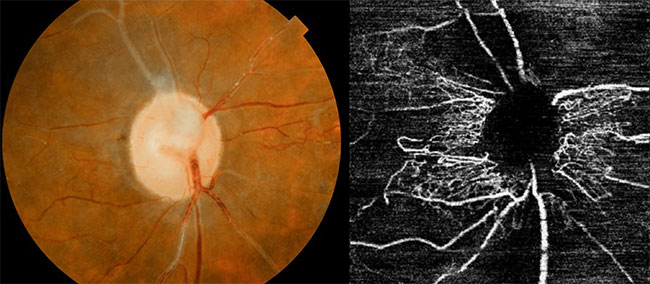Blink
Can You Guess August's Mystery Condition?
Download PDF
Make your diagnosis in the comments, and look for the answer in next month’s Blink.

Last Month’s Blink
Chlorpromazine Keratolenticular Deposits
Written by Andreia Soares, MD, and Nuno Franqueira, MD. Photo by Dr. Franqueira. All are at Hospital De Braga, Portugal.
This is the case of a 48-year-old woman who has had schizophrenia for 10 years. Her schizophrenia has been stable for 7 years with a therapeutic regimen of chlorpromazine 400 mg/day, flurazepam hydrochloride 60 mg/day, and risperidone 8 mg/day.
A recent ophthalmic examination revealed a visual acuity of 20/40 bilaterally. Funduscopy was normal. Biomicroscopy showed fine, discrete, brown deposits on the corneal endothelium of both eyes. The corneal epithelium and stroma were free of deposits, and the anterior chamber was clear. A characteristic stellate cataract with brown granular deposits was also observed. These changes are related to prolonged exposure of chlorpromazine.
It is reported1 that corneal changes may be observed at doses greater than 300 mg/day over a 2-year period, but these changes could occur in patients treated with high doses (greater than 2 g/day) within a period of months. Corneal and some lenticular changes can be slowly reversible after drug cessation; however, the lenticular changes are less likely to resolve.
___________________________
1 Raizman M et al. Surv Ophthalmol. 2017;62(3):286-301.
Read your colleagues’ discussion.
| BLINK SUBMISSIONS: Send us your ophthalmic image and its explanation in 150-250 words. E-mail to eyenet@aao.org, fax to 415-561-8575, or mail to EyeNet Magazine, 655 Beach Street, San Francisco, CA 94109. Please note that EyeNet reserves the right to edit Blink submissions. |